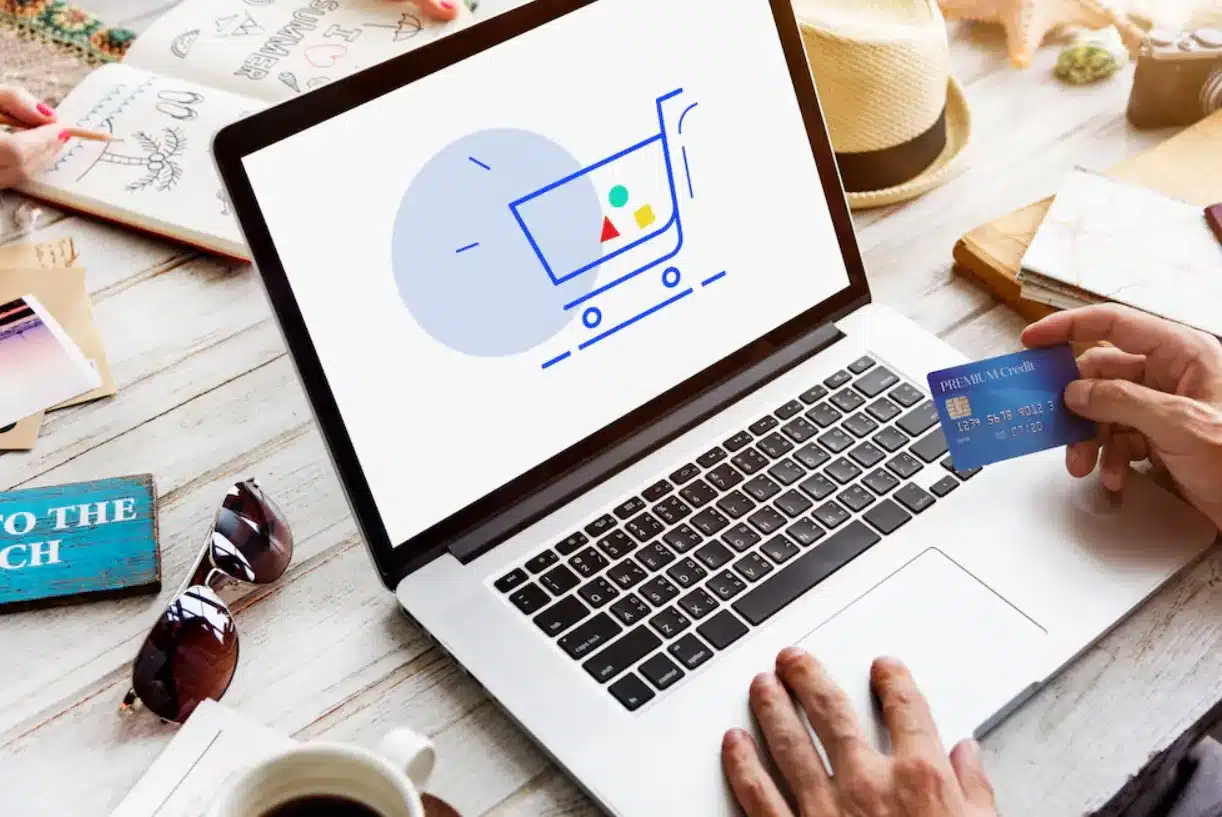E-procurement means a progressive change from traditional means to digital transformation in the procurement process. Reflecting a paradigm shift in the way business acquires goods or services, this technological revolution has eased operations with transparency and efficiency, having done away with manual, paper-based systems in all activities to be replaced by automatic, digital systems. The more companies use e-procurement solutions, the more possible savings and strategic insights they can get for their spending. The article outlines the key benefits, challenges, and prominent trends that shape the future of e-procurement, hence being a must-guide for each organization that wants to optimize its purchases in the conditions of the digital era.

Table of Contents
What is e procurement?
E-procurement, in contrast, is short for electronic procurement and denotes an online tool for enabling the requisitioning, ordering, and purchasing of goods and services from one business to another. Unlike general e-commerce, e-procurement takes place under a safe system that is available only to the authorized for swift interactions through proposals, purchase orders, and invoices.
Originating in the 1980s with the development of Electronic Data Interchange (EDI), e-procurement has evolved to include a comprehensive suite of activities such as vendor assessment, contract management, and electronic transactions. Today, it is managed through web interfaces or networked systems that enable procurement teams to secure products at optimal prices and times by fostering strong supplier relationships and establishing clear procurement guidelines.
How does electronic procurement function?
E-Procurement makes the process less complex, carrying out automation of all traditional functions like eAuctions, eTenders, supplier contract interchange, and supplier onboarding form completion. This is made possible through the consolidation of all stakeholders and workflows onto one digital platform.
Vendor or supplier management remains at the core of e-procurement because this is what is going to help maintain better relationships with the suppliers. It also remains responsible for the suppliers’ data management. Other than that, another salient feature of e-procurement is e-sourcing in order to define the requirements and pre-qualification of suppliers:

- E-sourcing: Defining procurement needs and pre-screening potential suppliers.
- E-tendering: Soliciting detailed information, proposals, and price quotes from suppliers.
- E-auctioning: Assessing supplier capabilities, conducting negotiations, and managing contracts.
- E-ordering and payment: Generating requisitions and purchase orders, and handling the receipt of goods.
- Analytics: Monitoring expenditure and implementing adjustments as needed.
Additionally, e-informing plays a critical role by enabling ongoing communication between all parties, ensuring that the e-procurement system delivers reciprocal benefits.
Software for E procurement

For example, e-procurement software is an automation tool meant for the many activities, functions, and processes related to policies, contracts, and vendors, among others. The purpose of this technology is to make operations more accessible, with the necessity for physical or PA operations.
The actual features in the e-procurement software vary from provider to provider. Still, the end promise, it always maintains, is that it will render the procurement operations of users more efficient. E-procurement systems usually have customizable tools that enable procurement managers to:
- Specify which items are accessible to certain users;
- Manage access to budget details;
- Set approval permissions for purchase requisitions;
- Regulate who can view and settle invoices.
In addition to that, most of such e-procurement platforms are designed in a manner that can be accessed via mobile gadgets, including smartphones and tablets, hence making them more convenient and flexible to users.
What are the obstacles faced in electronic procurement?
The software’s installation and integration with the existing enterprise backend systems can be pretty problematic. Most of these problems occur during the adoption stage as an e-procurement solution. Besides this, training of the staff for proficient use of the new system and, very importantly, close cooperation with suppliers to make a smooth transition process to an online platform are two significant challenges that the organizations need to surmount.
E-procurement applications and supply chain management
E-procurement applications empower procurement offices to manage purchasing processes effectively. These applications enable users to:
- Browse online catalogs;
- Choose items that align with the organization’s criteria for cost, quality, and supplier compatibility;
- Issue requisitions; and
- Monitor the status of deliveries.
E-procurement brings a “special” value to the supply chain in the indirect materials form, which is a product not directly involved in the organization’s final product manufacturing. The most common example is office supplies or janitorial supplies.

Nonetheless, there are some situations in purchasing that this method of e-procurement may not fit into. For example, it might be impractical to procure mission-critical items that suppliers offer in tiny numbers. Other challenges may come about when:
- Inventory levels are low;
- Complex negotiations are required for procurement; and
- The potential for cost savings via an e-procurement platform is negligible.
Benefits of eProcurement

The advantages accruing to human beings from e-procurement are many, and they include the following:
Automates tedious tasks
Tasks such as managing auctions, handling document workflow for purchase orders, evaluating and selecting suppliers, conducting price negotiations, creating agreements, and storing supplier contracts can all be automated. This streamlines interactions between an organization and its suppliers, enhancing operational speed and freeing up employees for other important tasks.
Enhances procurement workflows
eProcurement enables end-user self-service and decentralizes procurement while controlling it through approved company catalogs. This will streamline the processing of requisition requests by employees for goods and services and execute supplier payment processing; hence, there will be more efficiency in procurement.
Provides insight into purchasing patterns
This is important because eProcurement will give clear insight into organizational expenditure, which is definitely imperative for good management and control of non-compliance to spending. Visibility can help identify opportunities that lie in consolidating suppliers or using purchasing power to gain better terms and save money.
For example, the entire market of procurement analytics all over the world is projected to reach $18.2 billion by the year 2030 at a compound annual growth rate (CAGR) of 23.6%, as told by Grand View Research in its report. Advanced procurement tools equip businesses with crucial insights and put them at the most advanced point in their industries.
Integrates with external supply chains and ERP systems
Improved visibility with regards to supplier information and transactions: The sharing of data between the ERP/Finance Systems and external Supply Chains will be in real-time. Thus, such connectivity will ensure that businesses will constantly have updated information that can better facilitate their decision-making and strategic planning.
How can you learn eProcurement?

Mastering eProcurement can be complex, requiring ongoing training and study to stay current with the latest technologies and methods. However, with the right training resources and literature, you can develop a functional understanding of eProcurement and explore its advantages.
Next, we’ll explore some practical ways to learn about eProcurement.
Obtain procurement certification
Undertaking a Bachelor’s or Master’s degree in Supply Chain Management would be a very brilliant way to understand the basics of procurement. The programs ground the students best for e-procurement careers, taking them through the acquisition skills and supply chain management up to understanding the e-procurement technologies.
Supply Chain Management, Master’s or Bachelor’s degree.
Speaking of the procurement profession, in the world of certifications, this field has a couple of choices. One of these is offered by the Chartered Institute of Procurement & Supply (CIPS), which ensures procurement education through the provision of training and certifications offered by CIPS.
Engage with webinars, blogs, and online learning platforms
The Internet is an abundant source for learning eProcurement, including webinars, blogs, e-learning platforms, etc. It is going to prove invaluable to the neophyte and the seasoned pro alike who want to take their skills one notch above the current level.
Seek mentorship and gain practical experience on the job
Under such guidance — whether it be from mentorship or a detailed, formal training program — experience in eProcurement would be lived and breathed. Leading organizations understand that the best way to gain practical hands-on experience in procurement is to provide an internship working under a seasoned mentor.
Frequently Asked Questions
What is e-procurement?
E-procurement, otherwise called electronic procurement, is the process of using the Internet—or, in some instances, intranet—to address the functioning requirements of an organization. It can be substitutional or integrated into traditional paper-based procedures, hence enhancing the competency of the entire purchasing procedure.
So, what’s e-procurement supposed to do?
It intends to secure products or services at the most favorable prices and at the most appropriate times; lying in this primary purpose, the e-procurement has the intention of making requisitioning, ordering, and purchasing of goods and services possible online by means of suppliers’ own, secure, and exclusive systems.
What really is the difference between e-sourcing and e-pro?
E-sourcing is used strategically to secure the best possible pricing and value within a contract. E-procurement, on the other hand, focuses more on the tactics of executing the purchase of goods and services efficiently as prescribed in the contract, concentrating on front-end vendor selection and agreement terms.
What makes procurement different from e-pro?
The above explains the traditional procurement, which is characterized by manual processes and physical documentation, while the latter makes use of digital media and electronic systems to smoothen the processes.
What is the conclusion on e-procurement?
In conclusion, e-procurement tools are essential for facilitating digital transformation in B2B transactions, improving efficiency significantly. The benefits provided by current e-procurement software are well-positioned to support widespread adoption across various industries.
